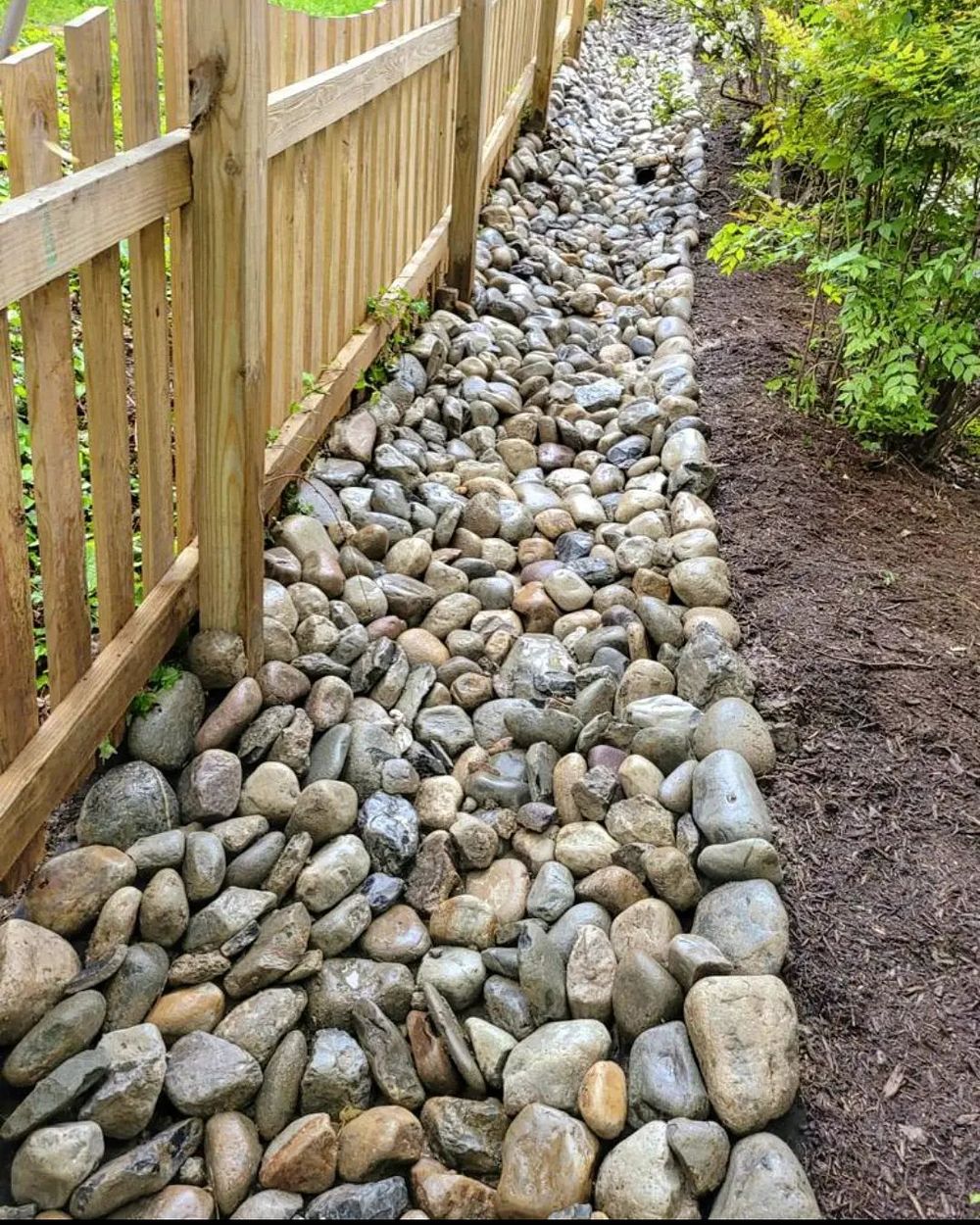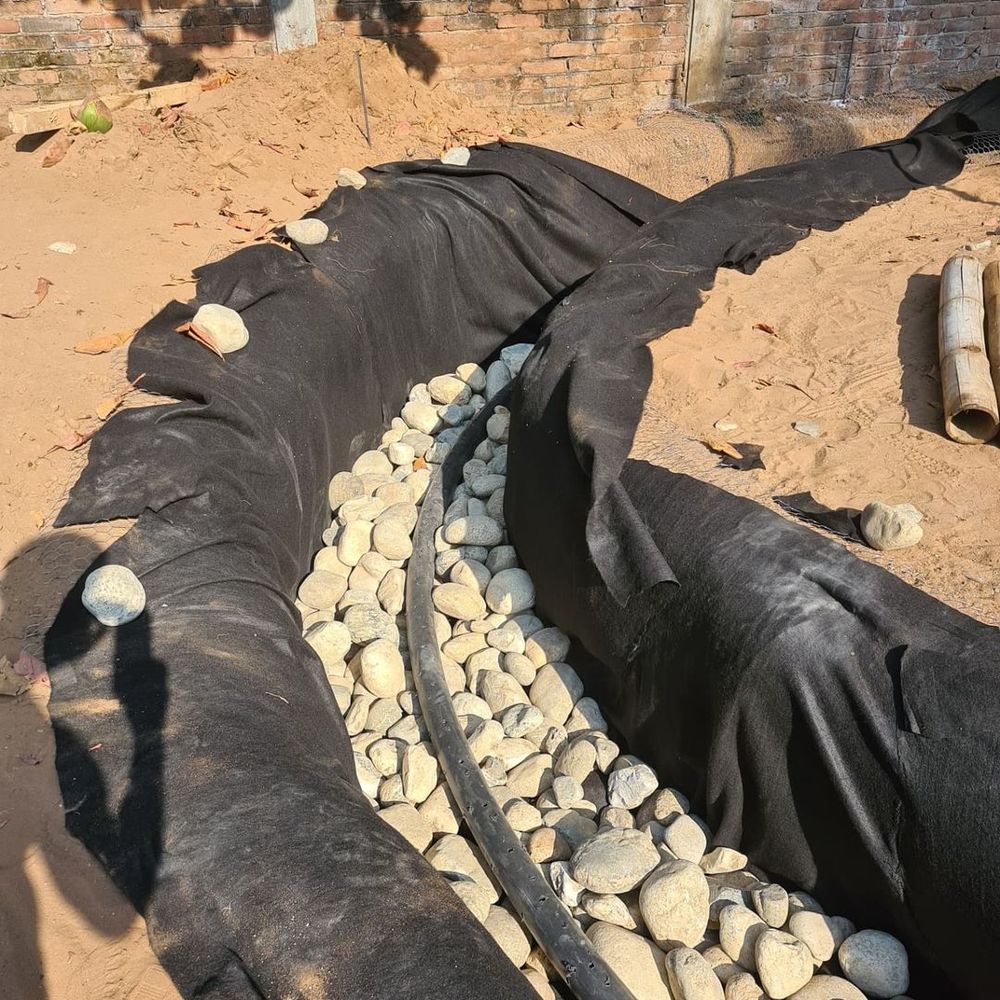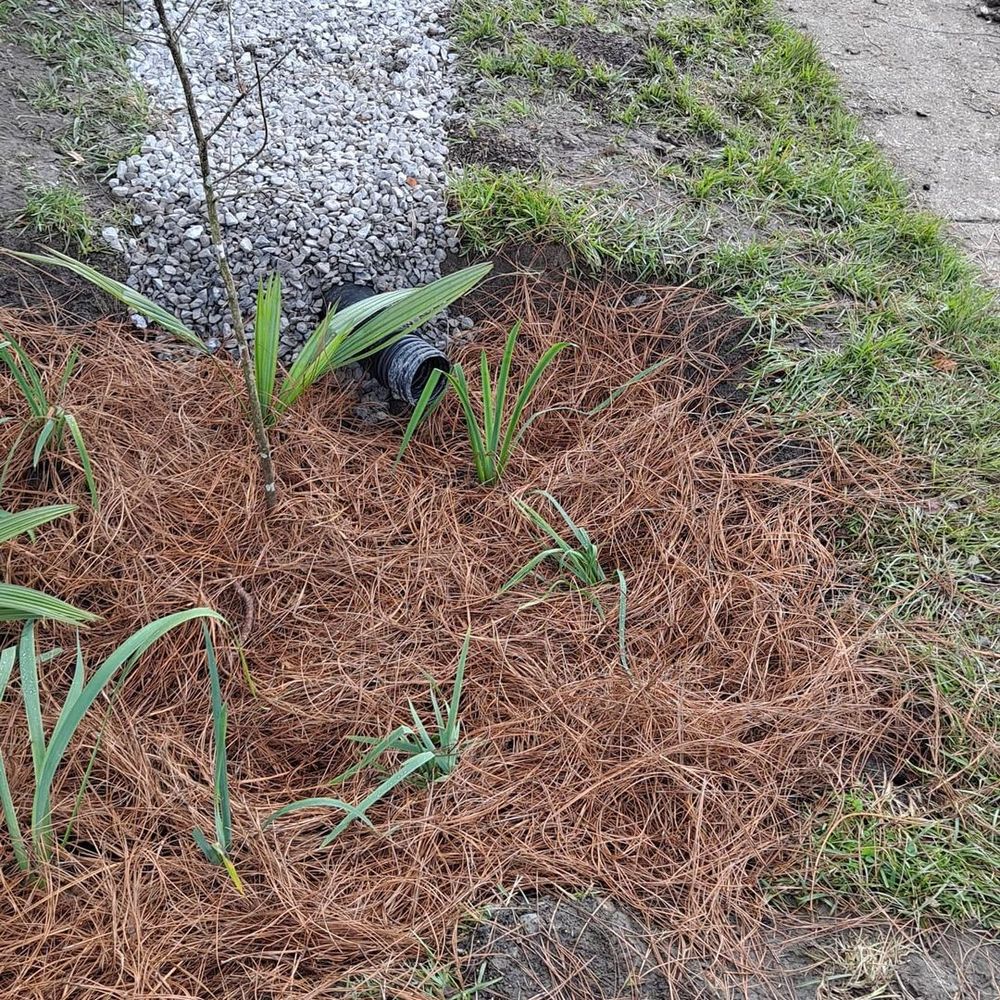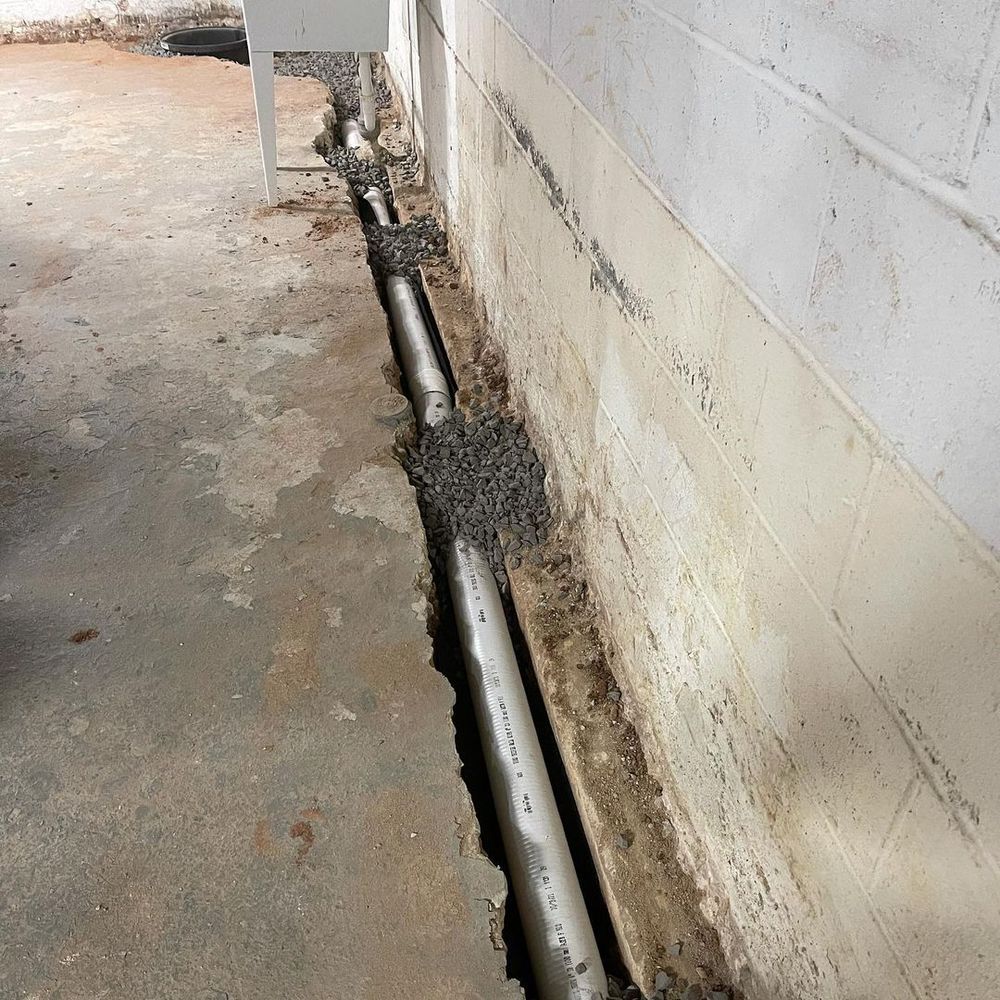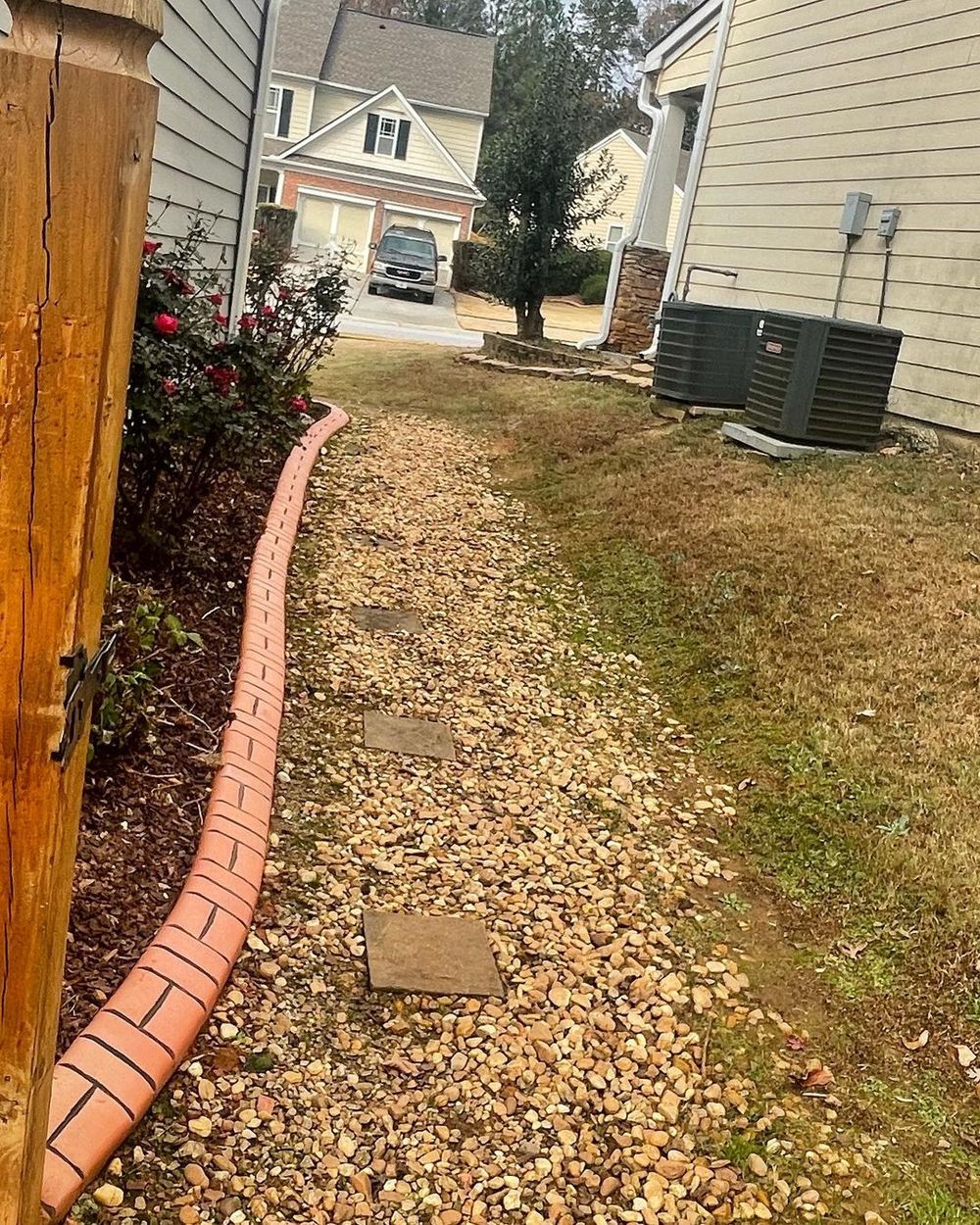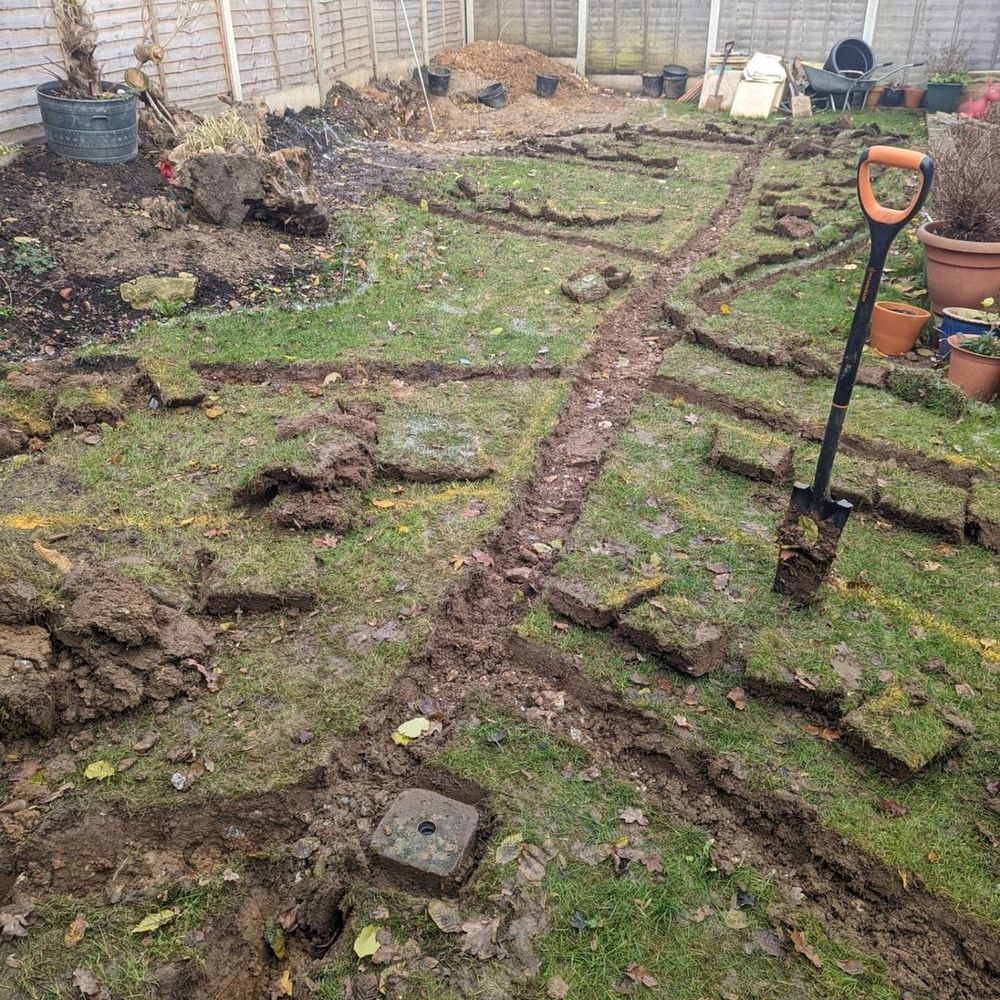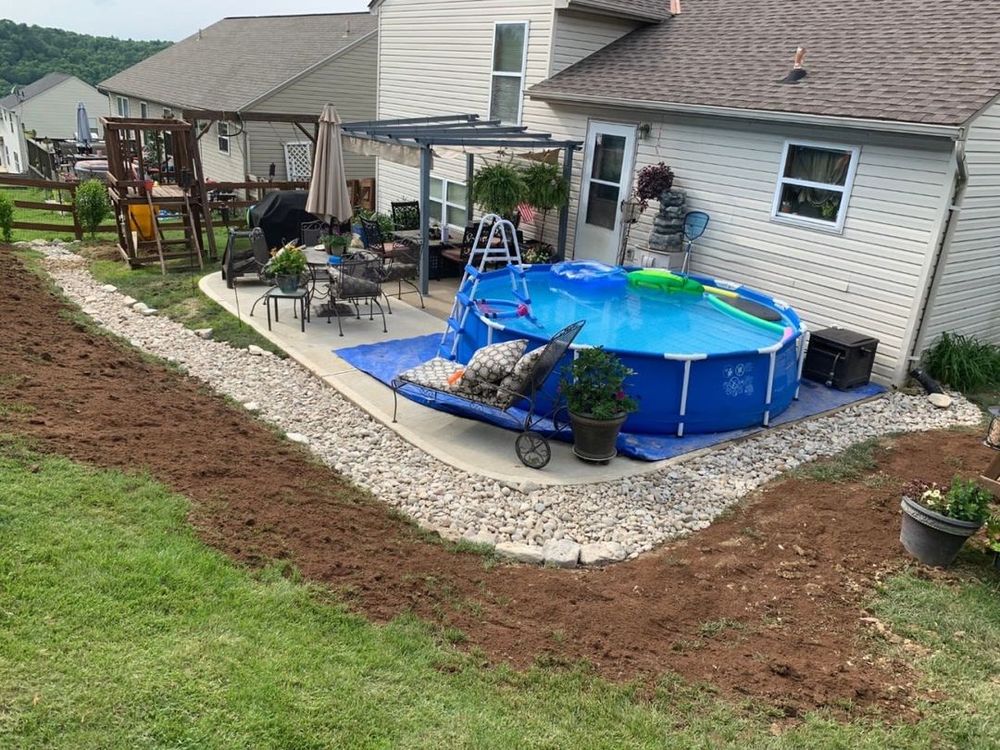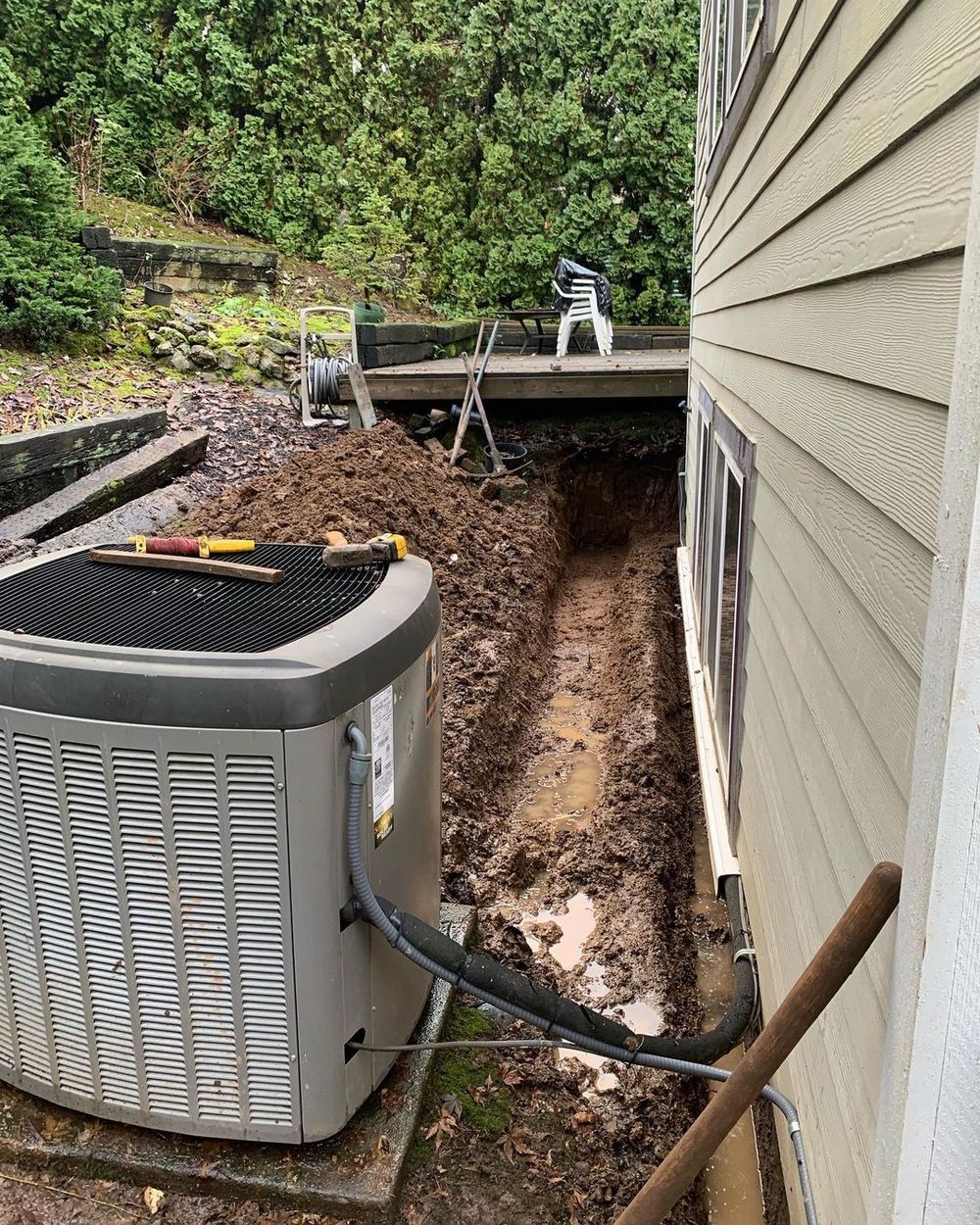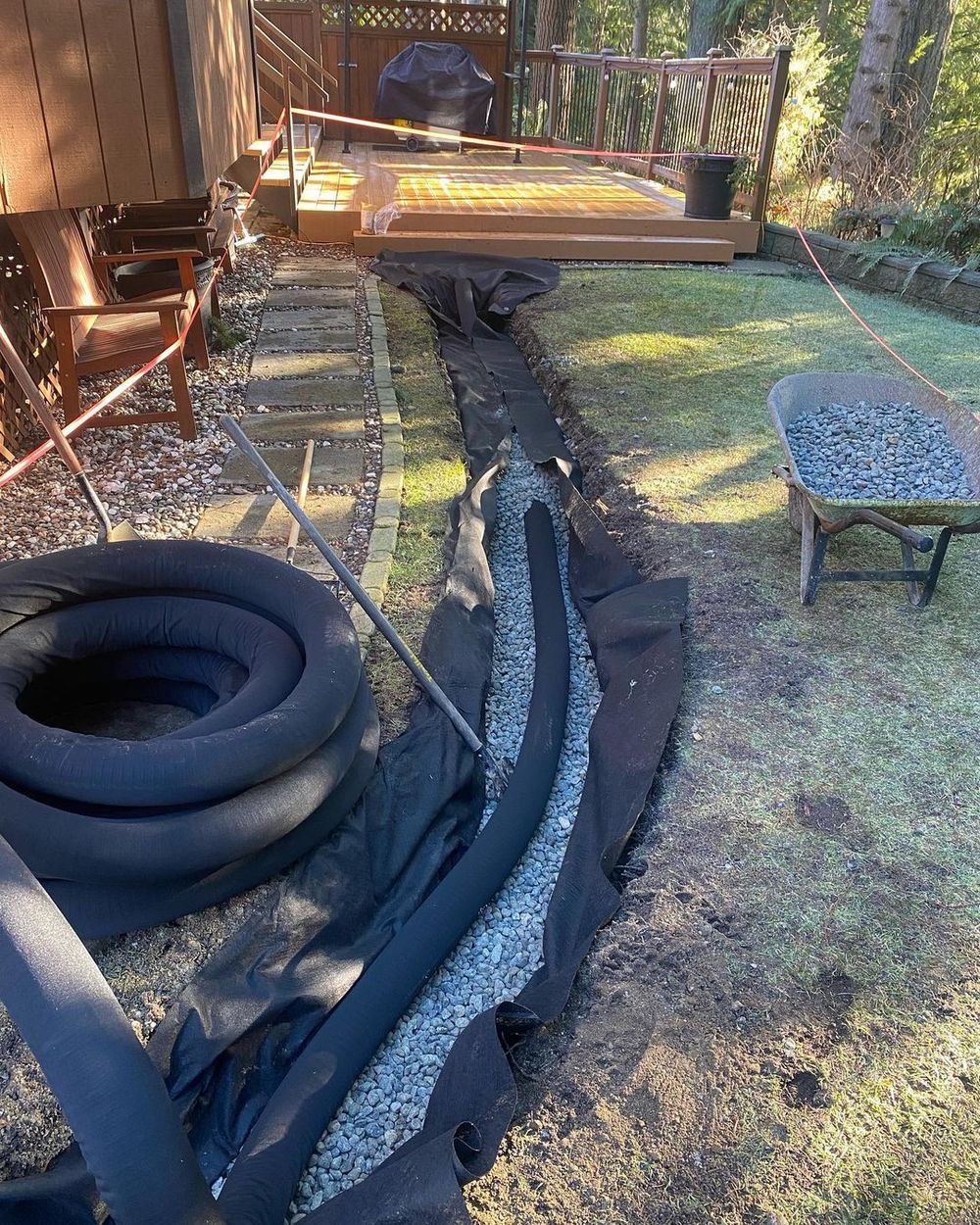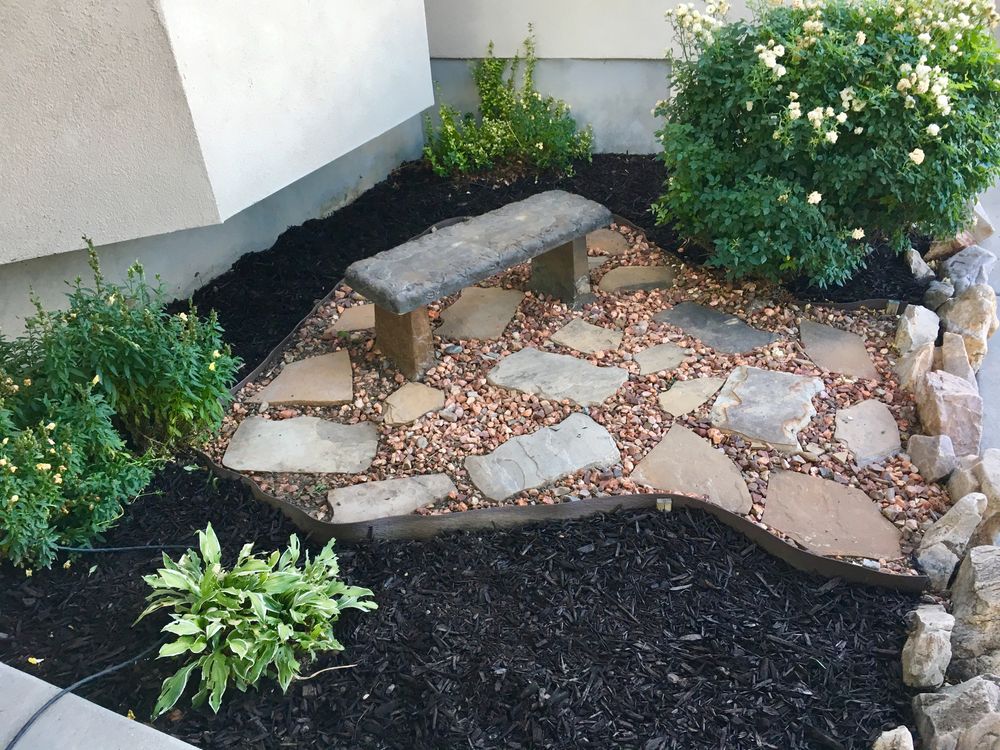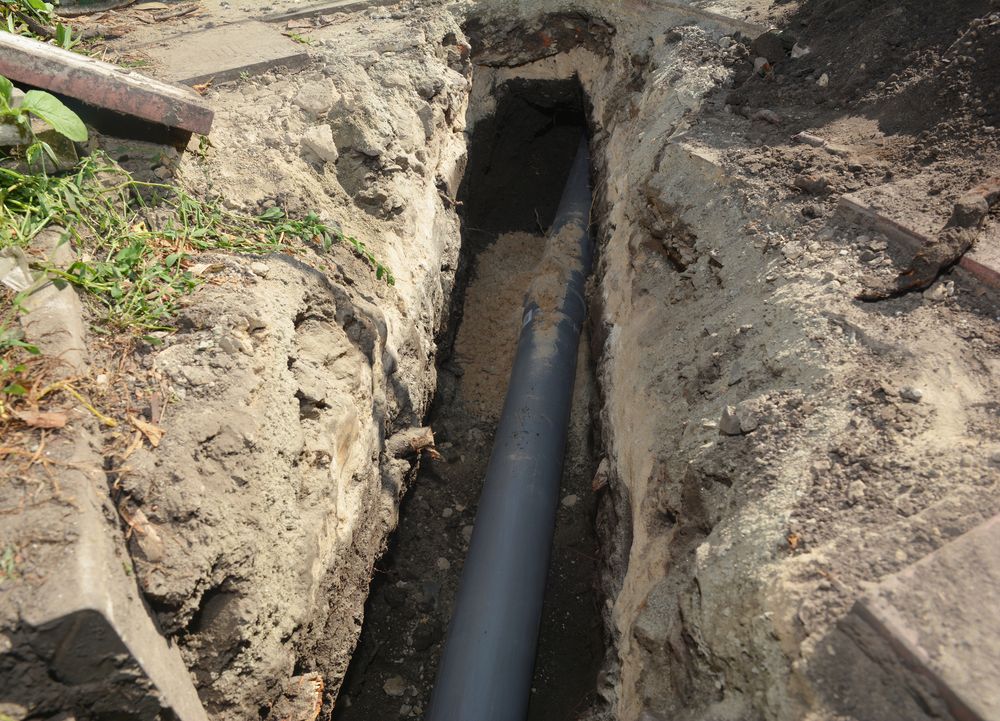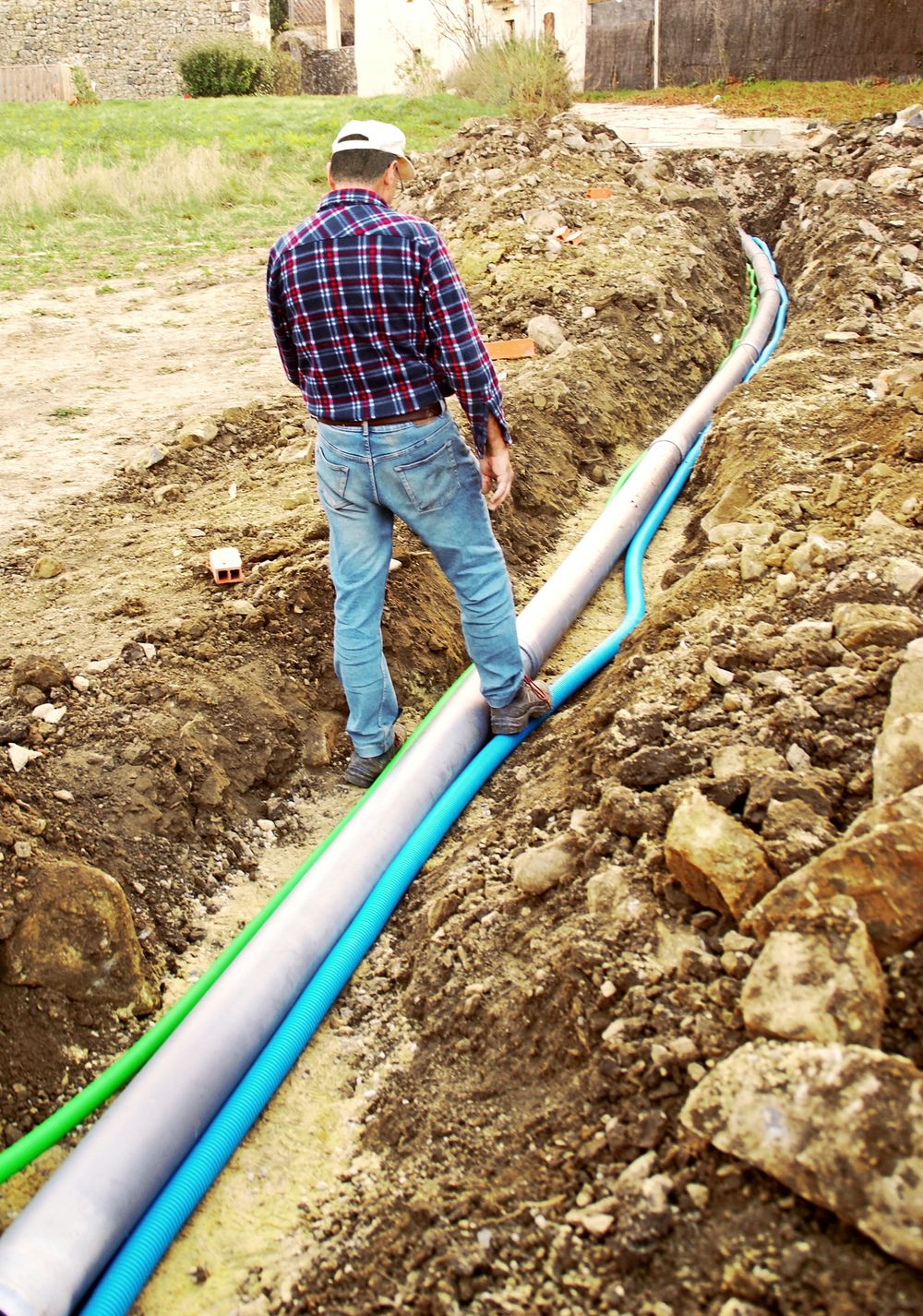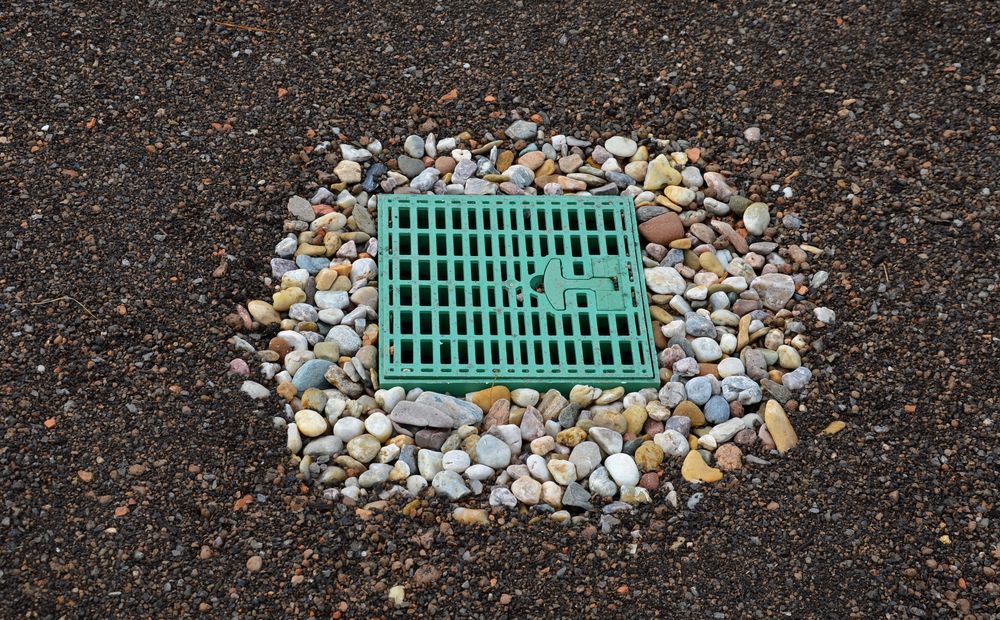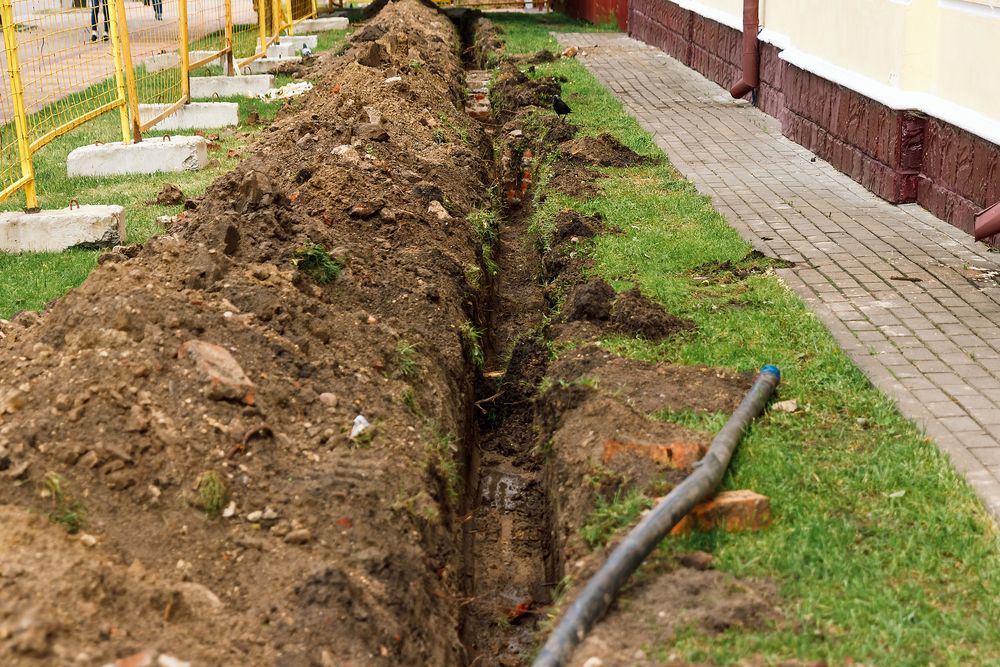French Drain: How to Install a French Drain System (Best Ideas)
French drains are a great way to keep your property healthy and drain any excess water. If you’re wondering how to install a French drain, our easy guide will show you everything you need to know.
A French drain is most often used in landscaping projects where a traditional exterior foundation drainage system won’t work, such as when surrounded by concrete or asphalt surfaces.
It is also an effective way to protect your home from flooding caused by excessive rainfall without resorting to installing a costly and complex drainage system.
If you’re interested in installing a French drain on your property, keep reading to discover all the information you need to know about this system, including how it works, signs that you need a French drain, installation steps, costs, maintenance tips, as well as common mistakes and how to avoid them.
We are also giving you some ideas to help you get inspired for your next home improvement project.
Table of Contents
What Is a French Drain?
Also called a curtain drain, a French drain is a simple, yet effective way to divert water away from your home’s foundation and protect it from potential water damage. It is basically an underground drainage system that consists of a trench filled with gravel or rocks, perforated drainage tile, and soil.
When properly installed, a French drain can handle large amounts of water without any problem by moving the water away from your home.
How Does a French Drain Work?
A diameter pipe, called a perforated tile, lies at the bottom of the trench. It allows water to flow easily down through the drain into the surrounding soil below. The water never enters the tile itself because it drains into an underground conduit that carries it away from your home – usually to a nearby stream or pond.
French Drain Components
A French drain system comprises four key parts:
- Trench. You usually dig it around the outer perimeter of your home or foundation. It must be deep enough to reach a permeable layer of soil, but the depth of the trench depends on how much water it needs to drain away from your property.
- Gravel or rock material. You should use at least 3 feet of gravel or rock material as the bedding and for covering the drainage pipes. It helps water quickly pass through the drain and into the soil below.
- Inlet grate. It catches a large amount of water and sends it to the perforated file. You need to install an inlet grate at the end of the trench where water tends to form most. The best material for an inlet grate is galvanized steel. Plus, it should be large enough to keep debris from entering the trench and clogging the drainage tile.
- Perforated tile. It carries water that enters through the inlet grate, ensuring that it reaches the soil beneath it. The holes of the perforated tile must be facing down.
- Filter fabric. It’s optional but recommended to prevent soil and debris from entering the drainage tile. You can use a geotextile filter fabric or landscape fabric for this purpose.
- Topsoil. You should fill the trench with the topsoil you initially removed while digging, after pouring the gravel and inserting the perforated tile. It helps anchor the drain and keep it in place.
Signs that You Need a French Drain System
Here are some signs that may indicate your house requires a French draining system:
- The grass is wet or has turned green in patches.
- Water pools around the foundation of your home (on top of the ground).
- Moss is growing on the exterior walls of your home.
- Interior flooding is common during common household tasks, like washing dishes.
- The toilet backs up while draining.
- Your basement often smells damp and moldy.
- The shower seems to drain slowly, especially after applying a heavy amount of soap or shampoo.
- Your house is starting to smell of sewage odors, although they seem to come from the outside.
- Rainwater gathers in pools next to your house.
- Water runs down your basement walls. Even worse, the water in your basement seems to be at the same level as the ground outside.
French Drain Installation
If you’re wondering how to install a French drain, you should know that it’s not a difficult project. However, it’s important to do it correctly to ensure that it works properly. Here are the basic steps:
Step 1: Check your neighborhood’s zoning restrictions
You might not be allowed to build a French drain system on your property. So it’s best to check with your homeowner’s association for neighborhood zoning restrictions and ensure that you are not violating any ordinances.
Step 2: Decide where you want to install the French drain
It should be as close to the problematic area as possible to divert the excess water away from the property. Take the following tips into account when looking for the best possible location:
- Identify the natural path of the water flow to stick to its course.
- The trench should be sloped downhill to drain the water away from the property.
- If possible, find higher ground for digging the trench and optimizing the drainage.
- Consider the possibility of connecting the French drain to your existing drainage system.
- Some people find it’s easier to divert the water to the road curbside.
- Be sure the drainage pipe won’t carry the water to a neighbor.
- Double-check that you won’t dig into an existing utility line.
Once you have decided on the best possible location, use stakes, ropes, flags, or something else to mark the perimeter of the trench.
Step 3: Dig the trench
Using a shovel or posthole digger, start digging the trench. It should be at least 9 inches wide and 18 inches deep (as deep as the surrounding soil). Avoid making it too wide or too deep since this will affect its performance.
Plus, it’s best to have a slope of at least 1% to allow gravity to do its job. Set the soil aside since you will later have to put it back.
Step 3: Install a drainage filter fabric
Once you have dug the trench, you will need to line it with waterproof filter fabric. It will help keep the rocks and soil in place while allowing the water to flow freely. It also prevents any tree roots from reaching the trench. You can secure the fabric using rocks, stakes, or pins.
Step 4: Add a layer of gravel
Cover the trench with a compact layer of gravel. It will fill most of the space and reduce further clogging, although it won’t eliminate the risk. Plus, the grave allows water to flow freely through the French drain system.
Make sure the gravel layer is about 3 inches deep. If you have difficulty finding enough gravel, you can use stones, bricks, or other similar materials.
Step 5: Install an inlet grate and drainage pipes
Set the inlet grate where water gathers the most along the French drain. Then, you can install the drainage pipes on the gravel bedding. Make sure the pipes cover the entire length of the trench and create an outlet for water at one end.
You can do this by digging shallow holes where you want to install the drainage pipes and filling them with pea gravel before laying down a perforated pipe; the drainage holes of the perforated pipe must be facing downwards. Use a PVC pipe as the drainage hose to make the French drain last longer.
Step 6: Test the water flow
Once you have finished installing the French drain, it’s time to test it. Pour a bucket of water into the inlet grate and see if it flows smoothly towards the outlet. If everything is working properly, the water should disappear in a few minutes.
Otherwise, if there are any problems with the installation, you can troubleshoot by referring to the French drain installation instructions.
Step 7: Cover with stone and more filter fabric
Add another thick layer of stone (about 3 inches deep) for optimal drainage but without filling the entire trench. Then, cover it with the same filter fabric used before to add an extra layer of security and protect the French drain from any external elements.
Step 8: Top off the French drain with soil
Finally, put the topsoil back into the trench to cover the filter fabric and make it as compact as possible. Before getting started, though, be sure to isolate the inlet grate so that no dirt or rocks get in to clog your new French drain.
Besides the fact that topsoil hides the French drain, you can use it to plant grass, flowers, or any other plants you like. However, make sure not to plant anything too close to the inlet grate since it can prevent water from reaching the drainage system.
You can water the area to help settle the soil around the drain. It’s also worth considering installing a landscaping border to make your French drain more appealing and give a polished look to the garden or yard. In that case, you can also add decorative stones on top of the soil.
French Drain Basement Tips
If you need to set up a basement french drain system, be sure to put it at least 1 foot away from the wall. This will give you room to run water pipes through the trench if needed. Don’t let any sharp edges of gravel puncture the tiles, or they won’t work properly.
Common French Drain Mistakes and How to Avoid Them
We have already mentioned that it’s not that challenging to build a French drain. Nevertheless, several things can go wrong in the process. Here are some of the most common mistakes and how to avoid them:
- Not digging the trench deep enough. The trench should be as deep as the surrounding soil.
- Not using gravel or rocks in the trench. The gravel or rocks help to keep the perforated tile in place, ensure proper drainage, and allow the water to flow freely and away from the house’s foundation.
- Not using a perforated drainage tile. The drainage tile allows water to flow easily down into the surrounding soil.
- Not watering the area after installation. It means you’ll have a plain channel dug in your yard that acts as nothing more than an underground pooling point. The water around your property line will eventually find its way into your foundation if not addressed by some other means.
- Not finishing landscaping around the French drain. This can prevent clogging of the drain by debris such as leaves and twigs.
- Using soggy topsoil in the trench. This may cause the tile to float, which can clog your drain.
- Cutting corners when it comes to safety. Removing tree stumps or roots and nearby plants may also be necessary during the installation process for this reason.
If you’re not comfortable installing a French drain yourself, you can hire a professional to do it for you. Just be sure to discuss your needs with them before they start working so they can plan accordingly.
How much does a French drain cost?
If you decide to hire a local contractor to build a French drain, expect to pay between $10 to $50 per linear foot for exterior use. However, the french drain installation cost goes up for interior use, such as in the basement. In this case, expect to pay anywhere between $40 to $100 per linear foot.
French Drain Maintenance Tips
A French drain requires proper care and occasional checkups to ensure the drainage tile works properly without getting clogged by debris or roots. Here are some of the most common tips to follow:
- Regularly inspect the underground part of the French drain. Routine inspection of the underground part of the system. It means taking a shovel and digging up the tiles periodically to check for issues.
- Look for signs of clogs, such as vegetation growing next to the trench or water pooling near it. It could also indicate that you need to increase the slope of your French drain to drain water more efficiently.
- Check the water inlet grate at least once a year.
- Inspect the sharp gravel edges for damage. You also need to remove any roots, twigs, and other debris that may clog the system.
- Frequently moisten the soil around the drain to ensure the proper flow of water into the surrounding soil. It prevents your French drain system from eroding or collapsing.
- Watch out for objects being thrown into the trench from any vehicles or kids playing in your yard. You can add a mesh cover to prevent this problem.
- Remove low-hanging tree branches that may reach the French drain.
- If you have a sump pump, make sure the discharge line is directed away from the French drain to avoid any backups.
If you notice any of the above problems, take corrective measures as soon as possible to avoid further damage to your property.
French Drain Ideas
Check out the following photos to find inspiration for your home improvement project involving a French drain.
1. French Drain in Yard
By installing a French drain in your yard, you can keep it looking great even during heavy rain periods. Just ask @perivalloninc.ca on Instagram.
2. Foundation French Drain
See how @frc_construction managed to keep water away from a home’s foundation using a French drain.
3. French Drain Around the House
Water problems around the house? No problem. Just install a French drain to keep everything dry. Check out this installation by @presentablelandscaping for more inspiration.
4. French Drain in the Yard
Here’s another example of a French drain in a yard to keep grass and plants healthy. It’s a more elaborate project, though, since it means digging a lot of trenches connected in a Y. Check it out by visiting @hitchyhouse.
5. DIY French Drain
You can also install a DIY French drain without resorting to a professional by digging trenches around the perimeter of your yard, filling them with gravel, and connecting them to a drain. Here’s a stunning example by @just_me_and_ruppert.
6. French Drain Design
For aesthetically pleasing French drain design in your basement, just ask @basementsloveus on Instagram.
7. Yard Drainage Pipe
To keep your yard drainage pipe clear of leaves and other debris, you should ideally install a French drain around it. Here’s another inspiring example by @buildwithgravel.
8. Outdoor Drain
Even outdoor drains can benefit from the French drain design treatment. Just ask @123.tamarindos to see how they did it.
9. Water Drain Pipe
If you’re having water drainage problems and your pipe isn’t too deep, consider installing a French drain. This one by @kingsley_improvements is a great example.
10. Another French Drain Design
Here’s one last French drain design to get your creative juices flowing. This one by @vmdrainageanderosion is perfect for a backyard with a garden.
French Drain (FAQ)
Learn more information about French drain systems.
How to unclog a French drain?
If your French drain becomes clogged, you can try to unclog it using a drainage snake. If that doesn’t work, you may need to call in a professional to clear out the system.
What kind of gravel should I use for a French drain?
You can use any type of gravel for your French drain as long as it doesn’t contain sharp edges that could damage the pipe. However, you should choose a type of gravel with similar properties to concrete in terms of strength and durability if you want your system to last long.
How much water can a French drain handle?
A French drain can handle around 25,000 gallons of water on its own. If you’re installing one around your home or business, though, you might need to buy more than one to ensure better drainage.
How big should the French drain cover be?
The size of your French drain cover will depend on how much rain falls on an average day. If you’re not sure, a good rule of thumb is to use a cover that’s twice as big as your French drain pipe.
How long should my French drain be?
Measure the area around it and multiply this number by 0.6; it’s the ideal ratio between water flow speed and drainage time for a French drain system.
What’s the difference between a French drain and a dry well?
A French drain collects and redirects water using a perforated pipe, while a dry well collects and stores water using rocks or other porous materials. A French drain is more efficient at draining water away from an area, but a dry well can handle more water volume.
Can I use a French drain to divert water from my roof?
Yes, a properly installed French drain can help divert water runoff from your roof to prevent flooding and other damage. Just make sure the slope of your roof directs the water towards the drain.
Final Thoughts on French Drain
In short, a French drain can help take care of drainage problems around your home. It’s a relatively easy project to do by yourself, but be sure to follow the proper steps to avoid common mistakes.
Regular maintenance and inspections are key to keeping your French drain system running smoothly. With a little bit of effort, it will continue to move water away from your home and prevent any costly water damage in the future.
Now that you know how to install a French drain and what can go wrong, it’s time to put your knowledge into practice. However, if you’re not comfortable installing it on your own, don’t hesitate to hire a professional that gets the job done right.
